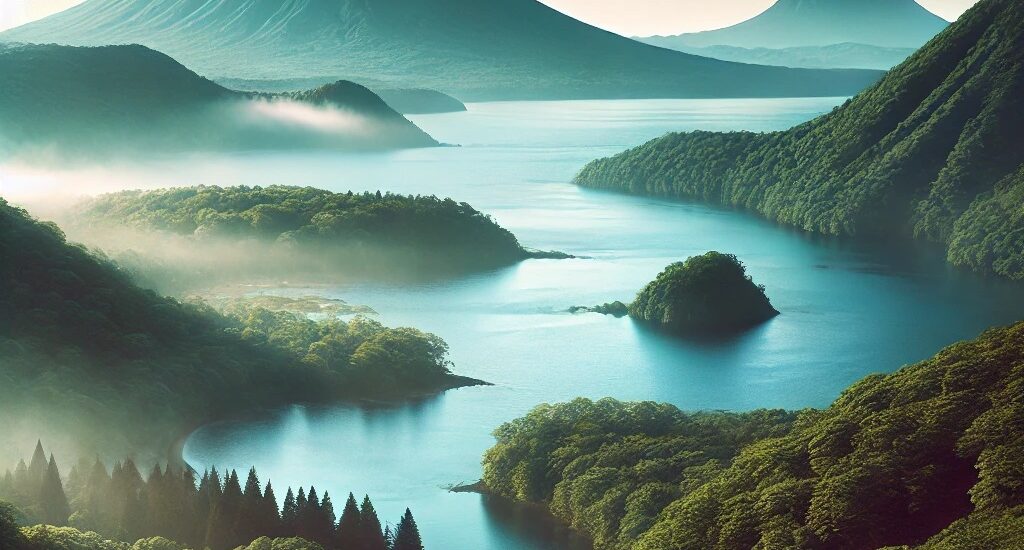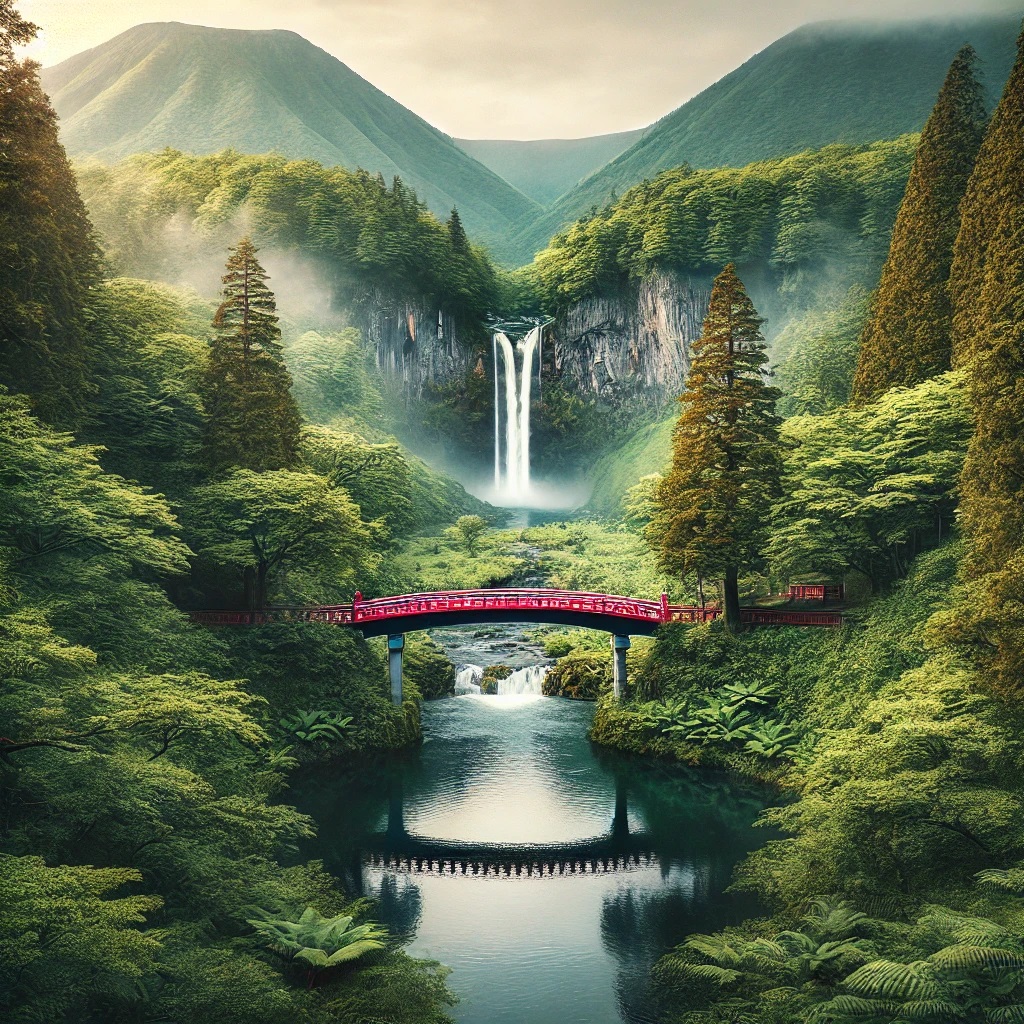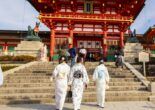Are you interested in exploring the wonders of nature within this beautiful country called Japan? Are you into hiking, trekking, being in the wild, or being one with nature in your free time? Then you have stumbled upon the perfect article for you!

The stunning beauty of Japan is not limited to its cities and temples but also to its breathtaking natural sceneries. The national parks of Japan provide different types of landscapes and biodiversity, and many travel agencies offer fun itineraries for tourists who want a taste of these kinds of adventures. These parks also contain wonderful scenic features ranging from mountains, forests, and shores that you can plan a whole nature escapade for your next vacation. Let’s explore several of the most beautiful national parks of Japan, paying homage to their importance in the country’s top and most sought-after tourism industry.
Discovering Japan’s National Parks
1. Akan Mashu National Park
Akan Mashu National Park is found in Hokkaido and is famous for features such as volcanic regions, clear water lakes, and wildlife.
- Lake Mashu: Famously clear with a dark blue hue, many of which are dotted with fog, giving them a magical feel.
- Mount Oakan and Mount Meakan: Scenic volcanic cones provide hiking trails that enable visitors to view the wonderful structures within the caldera.
- Hot Springs: Enjoy naturism in open-air hot springs (onsen) developed in secluded places such as the Akanko Onsen town.
2. Shiretoko National Park
Officially recognized as a world heritage site, Shiretoko National Park, located in the northeast of Hokkaido, is famous for its dramatic cliffs of the sea coast, dense forests, and a wide variety of marine life.
- Shiretoko Goko Lakes: Five beautiful lakes with hiking trails where people can also see brown bears, deer, and lots of other animals.
- Shiretoko Peninsula: Visit beautiful cliffs and waterfalls around the peninsula with an opportunity to use a boat to view the coast and likely spot some marine life.
- Drift Ice Viewing: In winter, you can see giant fields of drift ice along the coast, which is a natural kaleidoscope.
3. Ishi-jima (石島)
Ishi-jima is a beautiful national park encompassing the globally acclaimed Mount Fuji with variations of terrains, including volcanic, hot springs, and coastal landscapes.
- Mount Fuji: The tallest mountain in Japan and a representation of natural aesthetics, which has trekking facilities and a spectacular outlook from different angles.
- Hakone Hot Springs: Bathe in onsens and gaze at Mount Fuji during the trip around the area of Lake Ashi and the Hakone volcanoes.
- Izu Peninsula: Famous for cliffs and sandy beaches on the coast, offering several onsen resorts; good for car cruising and coastal treks.

4. Sanctuary of Nikko National Park (日光国立公園)
Nikko National Park is situated in Tochigi Prefecture and is one of the most popular areas known not only for its history, culture, and worship places but also for its untouched and beautiful nature.
- Toshogu Shrine: A historical destination that is prominent for its architecture and other structures.
- Kegon Falls: A famous waterfall in Japan, towering to a high level and located in a wooded area with tracks for trekking.
- Lake Chuzenji: A popular tourist attraction featuring a lake located in a mountainous region, offering boats and fishing activities with views of Mt. Nantai.
5. Yakushima National Park
Yakushima National Park is located on Yakushima Island in Kagoshima Prefecture and is famous for its aged cedar trees, luxuriant vegetation, and wild animals.
- Jomon Sugi: A famous cedar tree, more than 2,000 years old, with hiking paths ranging from easy to strenuous.
- Shiratani Unsuikyo Ravine: A surreal forested gorge with mossy rocks and a beautiful path for trailblazing.
- Yakusugi Land: Paths across cedar forests provide opportunities to meet the trees of the Jurassic age and the population of Japanese macaques (Yakushima macaques).
Conservation and Enjoyment
Japanese national parks are not only resources for recreation but also contribute to the preservation of the natural ecosystem. All tourists are advised to stick to the permitted paths, avoid interfering with natural habitats, and follow guidelines to preserve these wonderful areas for generations to come.
Planning Your Visit
When planning a visit to Japanese national parks, consider the following tips:
– Seasonal Considerations: Each park has different seasonal features, from cherry blossoms in spring to changing foliage in autumn and winter activities. Research thoroughly, especially for locations with specific schedules for flowers, outdoor activities, and more.
– Accommodations: Some parks offer accommodations for those who want to spend nights in the park, including campsites, lodges, and onsen resorts. Book in advance to avoid high costs and prepare for changing locations due to unforeseen situations.
– Local Cuisine: Try folklore dishes and fresh sea and ocean fish in nearby towns and regions. Each prefecture in Japan offers a variety of dishes that locals take great pride in. Ranging from meat to vegetable dishes, as well as snacks made from insects, ensure you get a taste of their mouthwatering delicacies.
Conclusion
Visiting the national parks of Japan offers an amazing experience of learning more about the country’s geological heritage and beauty. For mountain climbing experiences on extinct or active volcanoes, ground peace in lush forests, or delightful views of the seascape, Japan’s national parks offer the best. Set off on a trip to explore Japan’s protected lands that contain a variety of wonders, including varied vegetation and stunning views of lakes and mountains, shrines and temples that exhibit cultural heritage, and exotic terrains and sceneries worth exploring.
Related Articles
Warning: Undefined array key "sfsi_threadsIcon_order" in /home/veremosglobal/tokyoroomfinder.com/public_html/blog/wp-content/plugins/ultimate-social-media-icons/libs/controllers/sfsi_frontpopUp.php on line 165
Warning: Undefined array key "sfsi_blueskyIcon_order" in /home/veremosglobal/tokyoroomfinder.com/public_html/blog/wp-content/plugins/ultimate-social-media-icons/libs/controllers/sfsi_frontpopUp.php on line 170
Warning: Undefined array key "sfsi_bluesky_display" in /home/veremosglobal/tokyoroomfinder.com/public_html/blog/wp-content/plugins/ultimate-social-media-icons/libs/controllers/sfsi_frontpopUp.php on line 266



